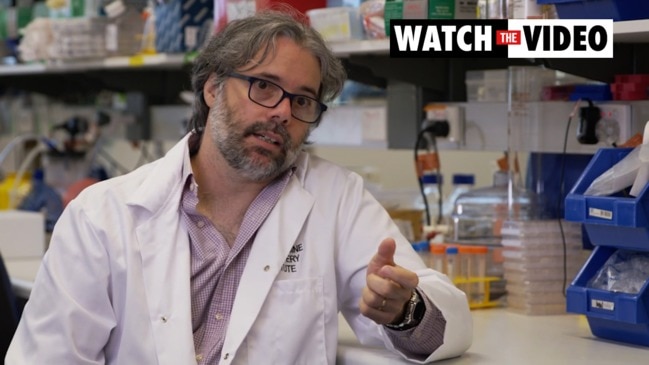Melbourne researchers are behind a groundbreaking world-first discovery that will revolutionise the medicine, but controversy is already brewing

Researchers at Melbourne’s Monash University has discovered that skin cells can be used to create human embryos.

Protein staining highlighting different cell types. Picture: Monash Biomedicine Discovery InstituteSource:Supplied
A law designed to outlaw the cloning of humans has temporarily stalled a Melbourne-led team’s discovery that they could grow human embryos in a lab using skin cells – but a government research council believes the law isn’t the only thing stopping those embryos becoming clones.
The team at a Monash University lab took skin cells from a single donor and grew them into genetic and structural recreations of human embryos, which they’ve dubbed “iBlastoids”.
Lead researcher Professor Jose Polo said the iBlastoids “will allow us to study the early days of human development without using human embryos”.
It’s also hoped they can provide insight into the causes of miscarriage and infertility.

This diagram shows the different between a natural fertilisation of an egg into an embryo compared to one grown in the lab from skin cells.Source:Supplied
While it’s still yet to fully emerge exactly what the embryos can do, Prof Polo is pretty sure there’s one thing they can’t.
“iBlastoids cannot be used to create humans in a lab,” Prof Polo said.
“They can only be used to model the very early days of human development. Indeed, all the evidence so far indicates that they cannot be used to model development beyond a few weeks,” he said.

Professor Jose Polo from Monash University. Picture: Monash UniversitySource:Supplied
Despite not being able to grow into a human, a law designed to stop the cloning of humans has created a roadblock for the research that requires them to destroy the embryos within two weeks of their creation.
After scientists cloned a sheep they named Dolly using a process called nuclear transfer in the mid-90s, Australia and other nations altered the definition of an embryo to include embryos created without the use of an egg or sperm.
The Monash embryos were created using skin cells and are considered to be human embryos.
The National Health and Medical Research Council told the Herald Sun that the iBlastoids “meet the definition of a human embryo”, but the council shared Prof Polo’s doubt about their growth potential.
“There is no suggestion that iBlastoids would or could be used to create real people,” the NHMRC said.
“Not only are there ethical and legal constraints, there are likely to be scientific ones.”
Protein staining highlighting different cell types. Picture: Monash Biomedicine Discovery InstituteSource:Supplied
Researchers aren’t supposed to keep experimenting on embryos or similar structures after 14 days has elapsed from the time of fertilisation, as it then starts reaching stages of development bioethicists consider signify the creation of unique life forms.
In keeping with that standard, none of the embryos in the Monash lab were kept beyond 11 days, with most being destroyed after six.
The team are applying for the required Embryo Research licence to continue their work.
Their research has been published in the latest edition of the scientific journal Nature.
The discovery, while boasting a lot of potential for future research, is also likely to prompt ethical concerns.
From left, PhD student Jia Ping Tan, Professor Jose Polo, and Dr Xiaodong (Ethan) Liu. Picture: Monash UniversitySource:Supplied
Stem Cells Australia program leader Professor Martin Pera said the Monash research and other similar studies around the world “will undoubtedly prompt further discussion regarding what work should be permitted with embryo models in a dish, particularly as they become more refined and capture later stages of human development.”
Prof Pera said the International Society for Stem Cell Research will be issuing new guidelines for research on embryo models soon.
Bond University postdoctoral research fellow Dr Jason Limnios said the public would “probably have a range of feelings” about the new technology, but stressed the importance of understanding that the iBlastoids “aren’t normal human embryos and won’t make a baby if implanted”.
Professor Megan Munsie from the University of Melbourne’s biomedical sciences school similarly said the “distinction is important” and that the iBlastoids should “not be considered equivalent to human embryos created in an IVF lab”.
Prof Munsie said the iBlastoids will however provide a new way to study a field in the science of human development that is still “very poorly understood”.